The Canadian Permafrost Association is pleased to host the CPA Webinar Series, an intermittent webinar series to be held virtually over Zoom. Through the Webinar Series, the CPA aims to encourage exposure to and discussion about current developments in permafrost science and engineering in Canada.
The webinar recordings are available to view to CPA members via the members-only section of the website. To join the CPA, please visit the CPA Membership page.
Upcoming webinars will be announced here and on our social media accounts. Stay tuned!
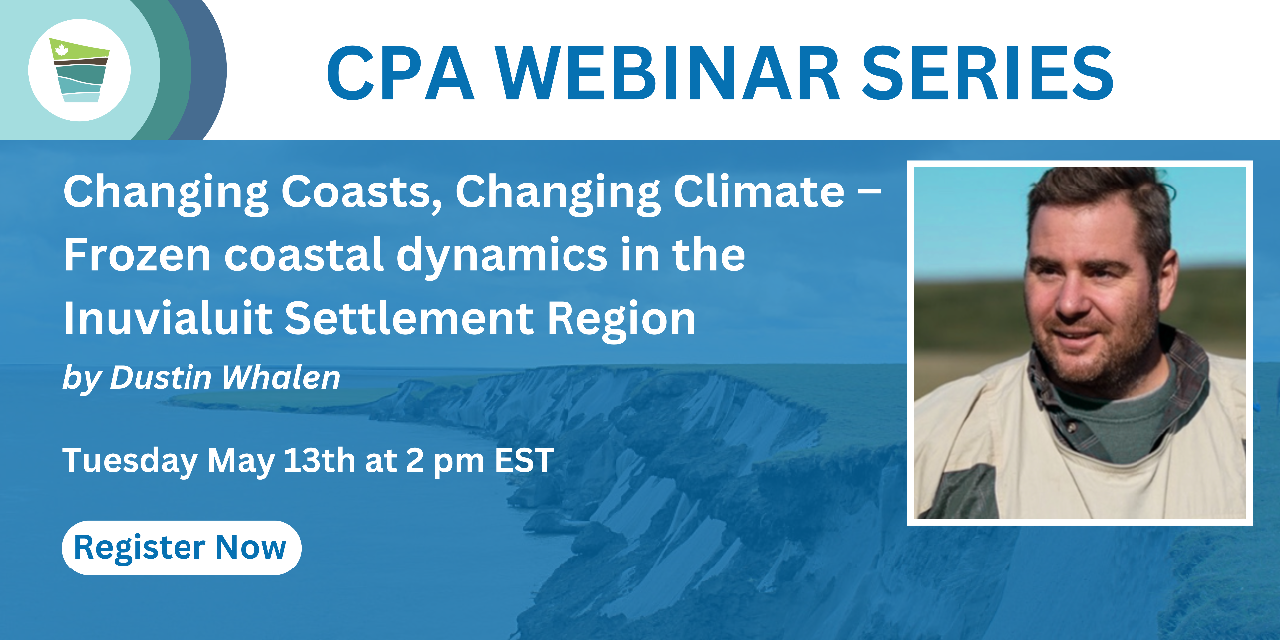 |
May 13, 2025
Changing Coasts, Changing Climate – Frozen coastal dynamics in the Inuvialuit Settlement Region with Dustin Whalen
The future of coastal communities across Inuit Nunangat relies on a better understanding of climate change from a natural science and holistic perspective. People of the Inuvialuit Settlement Region (ISR) are faced with undeniable threats from climate change that affect the stability and longevity of their coastal communities. For the communities of Tuktoyaktuk, Paulatuk, Ulukhaktok and Sachs Harbour the proximity to the coast and interactions with oceanographic forces can often define the greatest threat as storm surge flooding and/or coastal erosion. However, the response of the subsurface to permafrost thaw in these dynamic environments is equally important to determine the viability of community infrastructure, roadways and future developments. Dustin Whalen from the Geological Survey of Canada will provide an overview of this research and discuss the implications of coastal dynamics on frozen landscapes. |
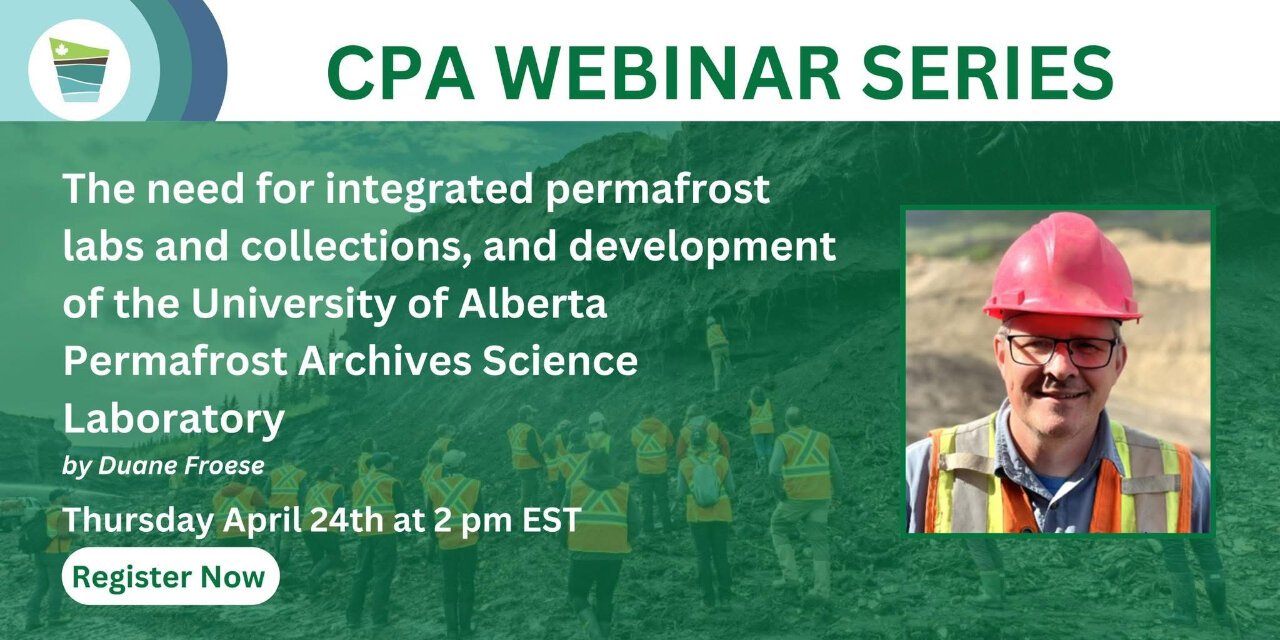 |
January 23, 2025
The need for integrated permafrost labs and collections, and development of the University of Alberta Permafrost Archives Science Laboratory with Duane Froese
The collection of permafrost materials from remote northern locations is expensive, time-consuming and carbon-intensive, with samples often discarded after single-purpose analysis despite their broader scientific value. The Permafrost ArChive Science (PACS) Laboratory at the University of Alberta addresses this challenge as Canada's first integrated permafrost archive and research facility. Funded by the Canadian Foundation for Innovation, this 400-square-meter facility houses freezers storing approximately 1.5 kilometers of core samples alongside dedicated analytical research space. PACS Lab employs both traditional analytical methods and has developed non-destructive approaches like Multi-Sensor Core Logging and Industrial Computed Tomography scanning to collect novel data to assess permafrost materials. Some of these applications will be described. The facility enables multidisciplinary applications including ancient environmental DNA studies that reveal past ecosystem changes, physical properties for infrastructure planning in permafrost regions, and biogeochemical characterization of permafrost. By centralizing these resources, PACS Lab minimizes the carbon footprint of permafrost research, but also accelerates discovery with more rapid access to materials for researchers who might otherwise lack access or expertise in recovering appropriate materials. As climate change increasingly affects permafrost regions, facilities like PACS Lab support better understanding, preserve archives of our natural history, and provide materials to aid ongoing challenges of the changing north. |
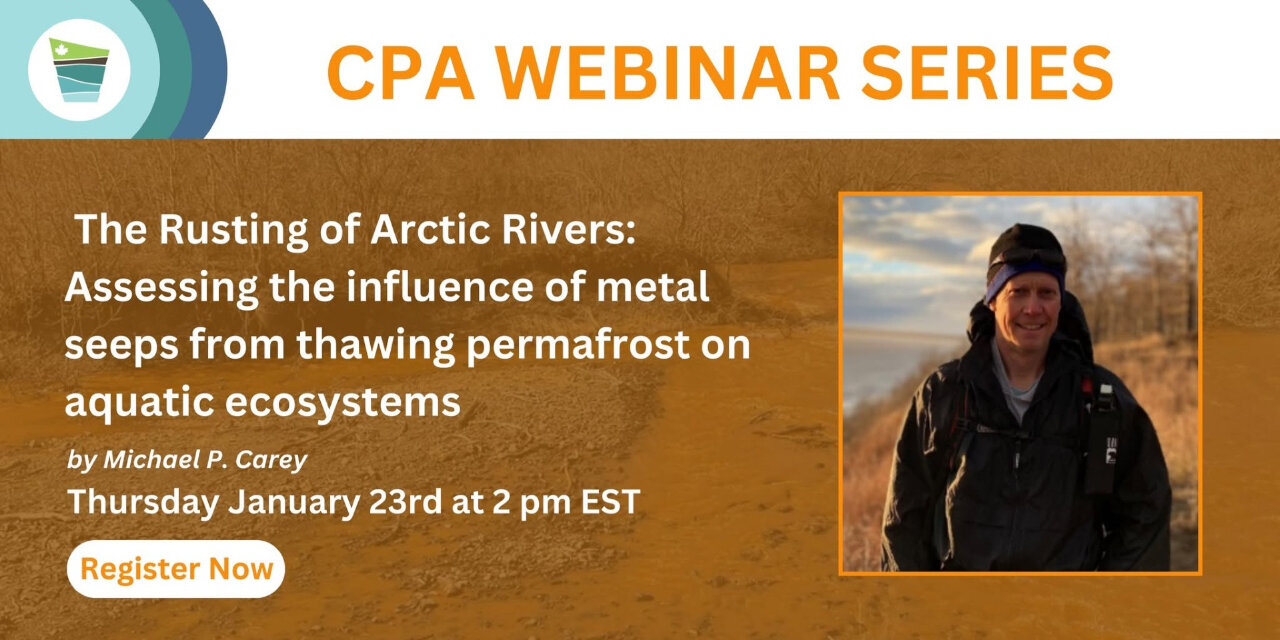 |
January 23, 2025
The Rusting of Arctic Rivers: Assessing the influence of metal seeps from thawing permafrost on aquatic ecosystems with Michael P. Carey
Widespread permafrost thaw has altered the concentration and flux of organic carbon, nutrients, and trace metals in Arctic rivers. Recent observations indicate that waters draining permafrost landscapes may be susceptible to iron and carbon mobilization following thaw. Observations suggest that orange stream reaches have higher iron concentrations (appear to be rusting), less dissolved oxygen, and more acidic water than nearby clear water streams. The conversion of streams from clear to orange water reflects a deterioration of habitat for benthic macroinvertebrates and fish. |
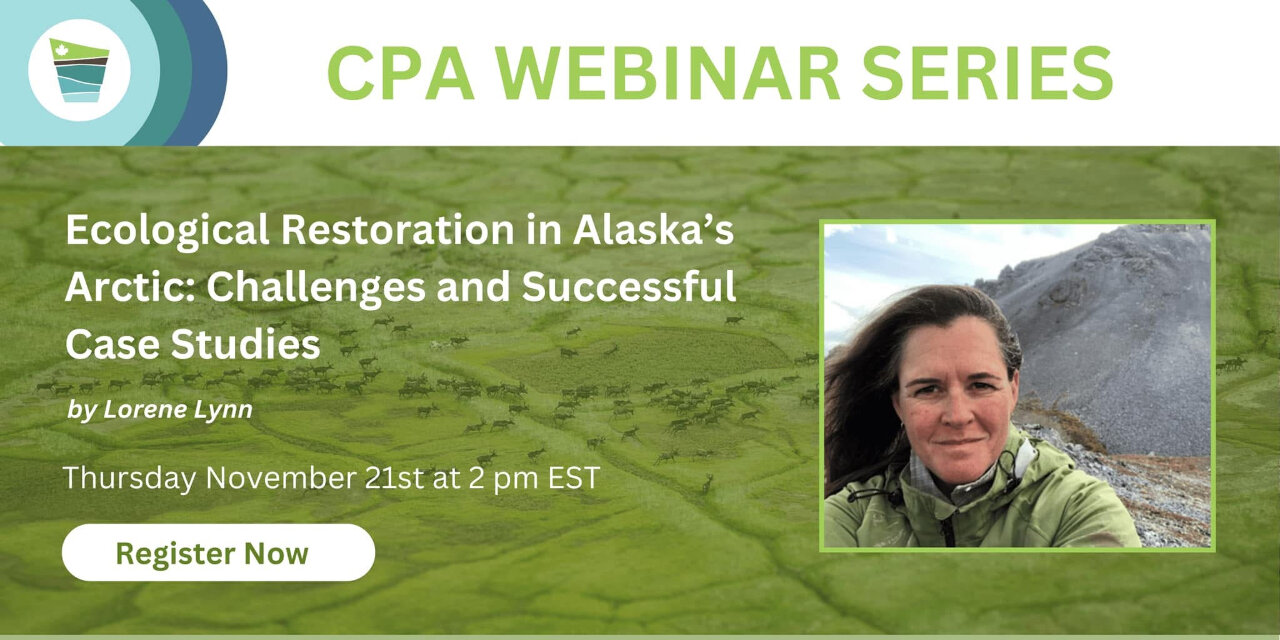 |
November 21, 2024
Ecological Restoration in Alaska’s Arctic: Challenges and Successful Case Studies with Lorene Lynn Phase
Applied scientist Lorene Lynn provides ecological restoration services in Alaska as the owner of Red Mountain Consulting LLC in Palmer, Alaska, an environmental sciences consulting firm. Her work builds upon graduate research with Dr. Chien-Lu Ping studying permafrost soils along the eroding Beaufort Sea coast and extensive experience with rehabilitation in Alaska’s North Slope oilfields. She provides expertise in planning, stakeholder engagement, construction, restoration implementation, long-term monitoring, and adaptive management to clients that include government agencies, nongovernmental organizations, and the private sector. Lorene formerly chaired the U.S. North Slope Science Initiative’s (NSSI) Science Technical Advisory Panel (STAP). |
.png) |
October 31, 2024
Two Phase Thermosyphons in the Canadian Arctic – Past, Present and Future with Justin Panagapko
Justin Panagapko is the President of Arctic Foundations of Canada, The manufacturer and installer of two-phase Thermosyphons in the Canadian Arctic. For over 40 years, Arctic Foundations of Canada has provided its customers and teaming partners rapid, well-conceived solutions to geotechnical problems through the application of their proprietary ground freezing technology. |
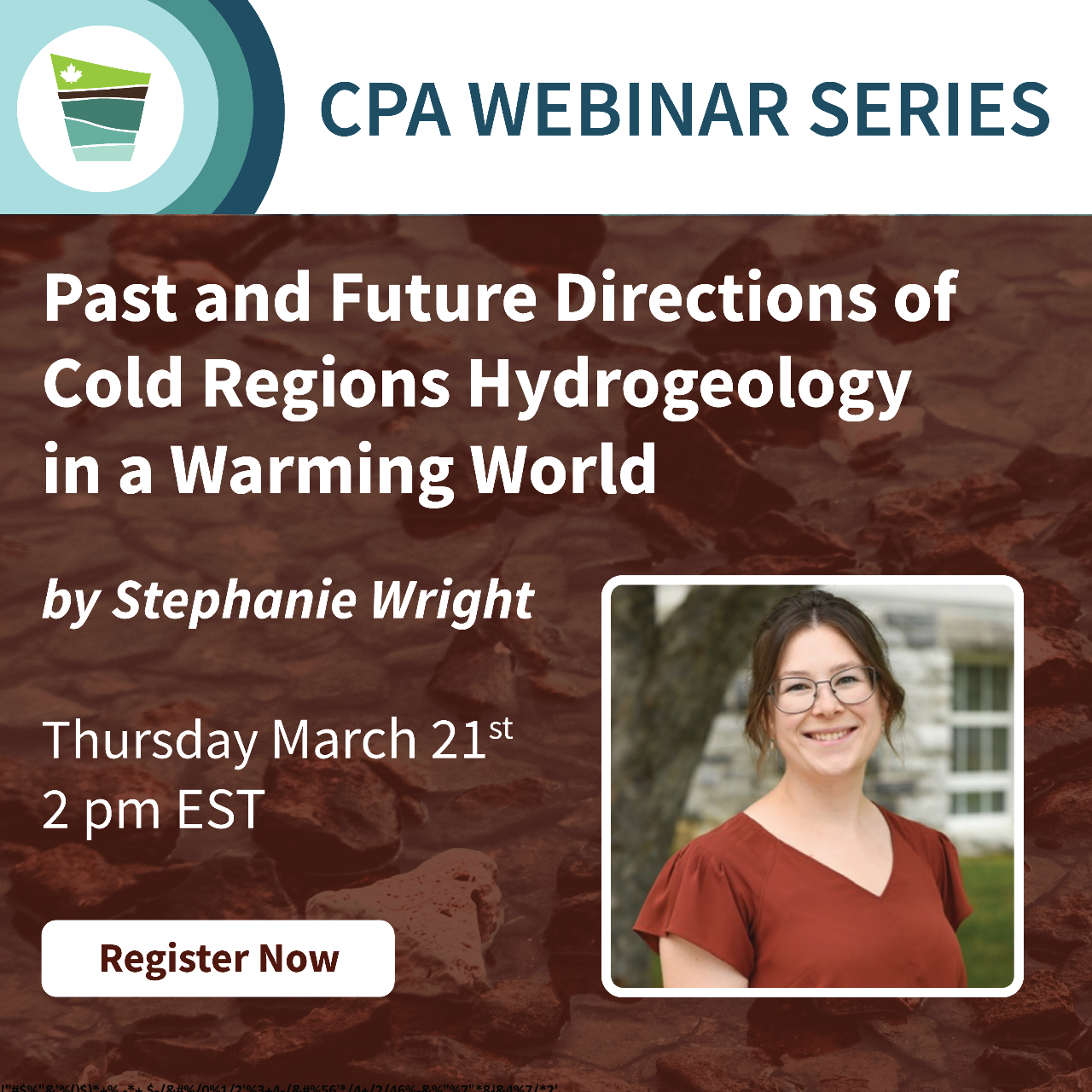 |
March 21, 2024
Past and Future Directions of Cold Regions Hydrogeology in a Warming World with Stephanie Wright
Climate warming is driving unprecedented changes to cold regions globally. In seasonally frozen environments, warming winters are altering the patterns of infiltration and recharge, placing uncertainties on already vulnerable groundwater supplies. In the Circumpolar North, rapid warming is leading to permafrost thaw that is activating groundwater systems, offering opportunities for new drinking water resources, while increasing the risk of contaminant mobilization and impacts to critical infrastructure. Community-partnered research is needed that leverages two-way knowledge exchange and focuses on the needs and priorities of those most affected by climate change. Such research is necessary to collectively manage and protect groundwater resources in a warming world. |
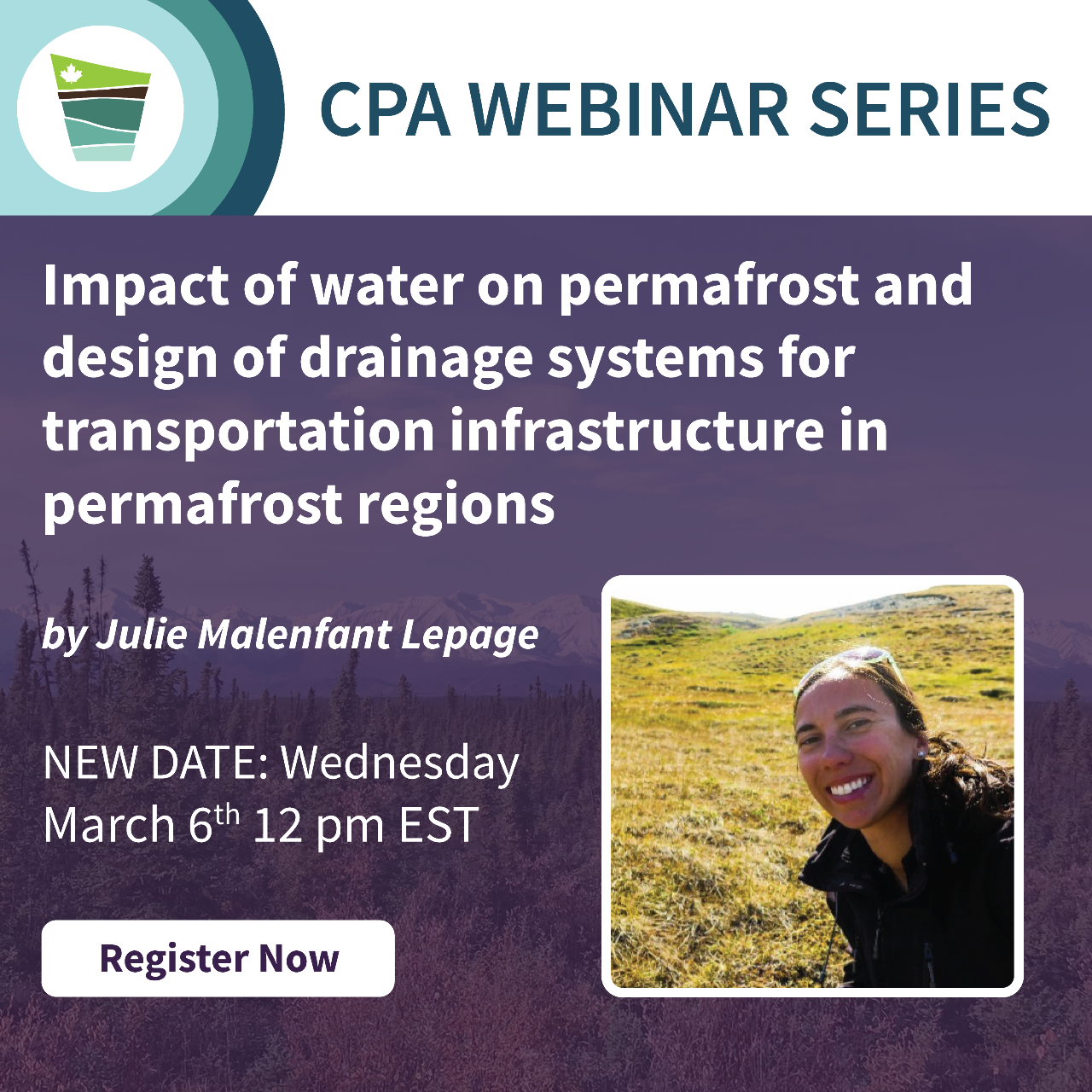 |
March 6, 2024
Impact of water on permafrost and design of drainage systems for transportation infrastructure in permafrost regions with Julie Malenfant Lepage
Water accumulation around and under transportation infrastructure increases permafrost degradation and can result in significant embankment subsidence, culvert failures, development of thermokarsts, thermal erosion, sinkholes as well as frost heave and icings in winter. These problems are likely to reduce structural and functional capacity of roads and runways and even lead to embankment failure in some cases. Currently, engineering methods for the design of drainage systems are still limited to a set of recommendations to avoid excessive heat transfer under embankments in permafrost regions. The experience developed in Canada is very localized, differs from one region to another and no design criteria have been clearly defined to date.
This webinar presented new strategies and engineering drainage design tools to limit erosion and mitigate permafrost degradation resulting from water flow along and underneath transportation infrastructure. The drainage strategies and tools developed were validated using observations and data from previous studies conducted at the Beaver Creek road test site in the Yukon and applied to the conditions of three other test sites where the ground is known to be sensible to permafrost degradation and thermal erosion. These sites are located along the Ilulissat airport access road in Greenland, at km 1894.5 of the Alaska Highway near the Alaska-Yukon Border, and along the Salluit airport access road in Nunavik. |
 |
January 25, 2024
Tour of the Canadian Permafrost Electrical Resistivity Survey (CPERS) Database with Teddi Herring
In Canada’s North, characterizing permafrost distribution across a site is essential for many scientific and engineering applications. Electrical resistivity tomography (ERT) is a geophysical method that is commonly used to inform interpretations of unfrozen, frozen, and ice-rich regions of the subsurface in 2D or 3D and is a valuable complement to standard point location measurements from boreholes. We created the Canadian Permafrost Electrical Resistivity Survey (CPERS) Database to facilitate the sharing of ERT data between researchers, practitioners, and communities. Currently, the database contains information from 280 ERT surveys carried out across North America between 2008 and 2022. This presentation gave an overview of the database and its contents and provided guidance for using the data in your own work. |
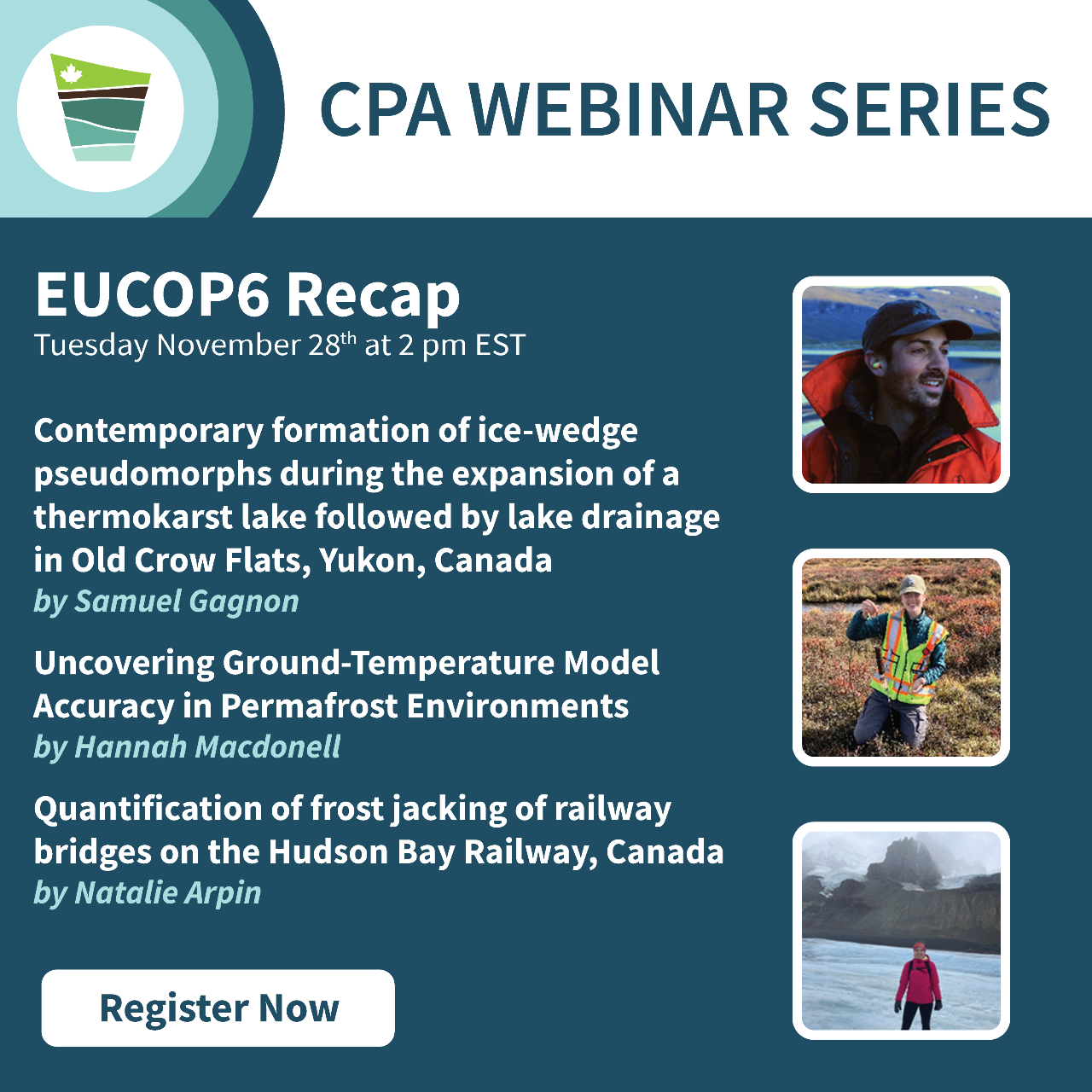 |
November 28, 2023
EUCOP6 Recap with Samuel Gagnon, Hannah Macdonell, and Natalie Arpin
Samuel Gagnon: Contemporary formation of ice-wedge pseudomorphs during the expansion of a thermokarst lake followed by lake drainage in Old Crow Flats, Yukon, Canada
Hannah Macdonell: Uncovering Ground-Temperature Model Accuracy in Permafrost Environments
Natalie Arpin: Quantification of frost jacking of railway bridges on the Hudson Bay Railway, Canada
EUCOP6 featured excellent presentations by Canadian early career researchers. For those who were unable to attend or who would like to enjoy these wonderful presentations again, this webinar featured three EUCOP6 presentations by Canadian early career researchers focused on a variety of permafrost related features, hazards, and modelling. |
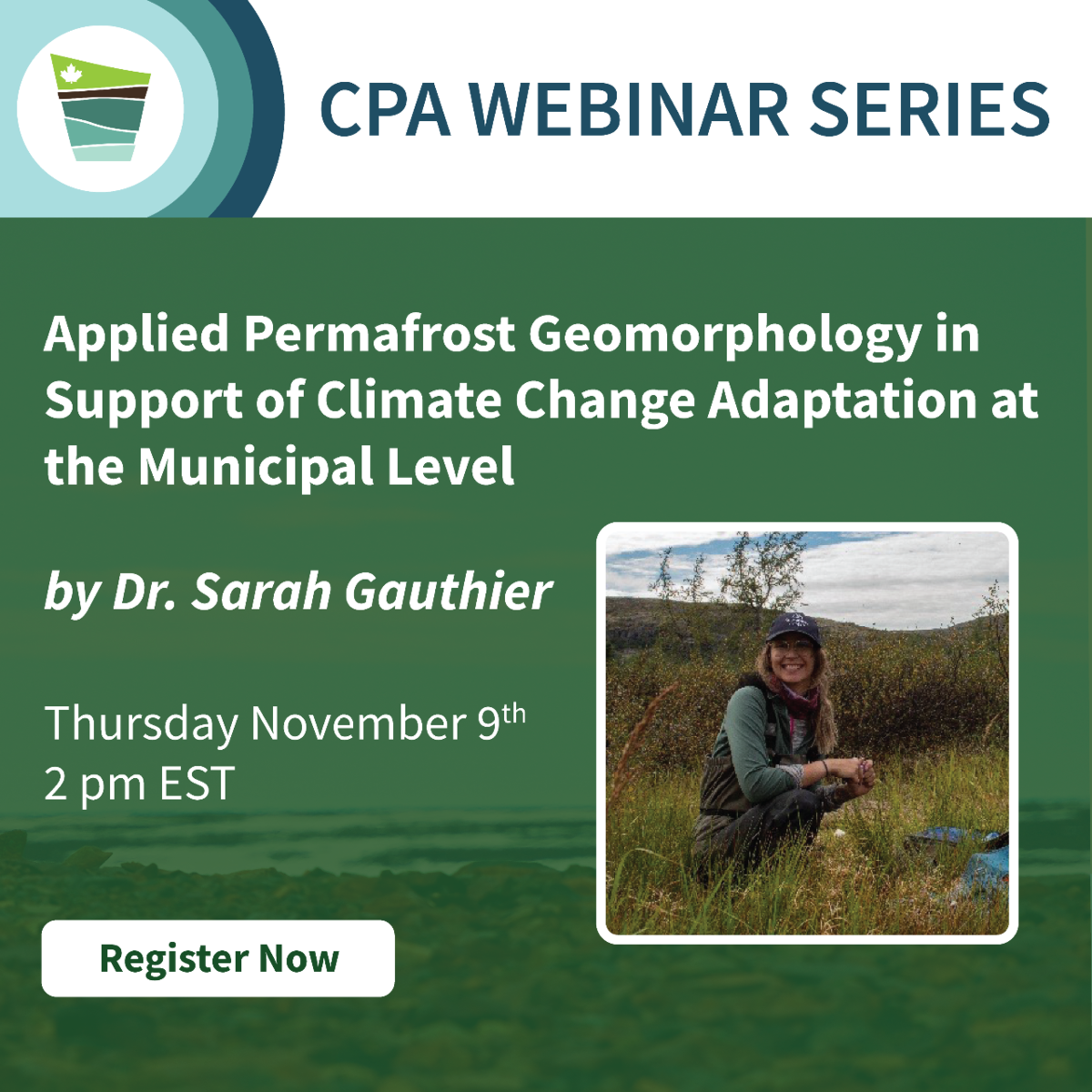 |
November 9, 2023
Applied Permafrost Geomorphology in Support of Climate Change Adaptation at the Municipal Level with Dr. Sarah Gauthier
There is a growing demand for research projects that address the concerns of northern communities regarding the impacts of permafrost thaw on infrastructure and landscapes. Increasingly, researchers are expected to orient their projects to target northern concerns and to work collaboratively with communities. The northern research community is rising to the challenge, with many projects aiming to produce data and models that can support the assessment, prediction, and mitigation of a wide range of hazards. However, these useful research products often end up 'on the shelf', and uptake by local and regional stakeholders remains low, because effective knowledge transmission is an apparent barrier to meaningful research contributions. This webinar will present a study that focused on Inuit community of Salluit (Nunavik), where permafrost conditions within the municipal limits result in severe land use planning issues, complicate community expansion, and where extensive permafrost research projects has been conducted for the last 30 years. Conducted in partnership with local and regional stakeholders, this applied permafrost geomorphology project focused on the assessment, mapping, and monitoring of permafrost conditions to identify zones with good construction potential for community expansion. A multi-pronged knowledge transmission strategy was used to facilitate the effective use of the decision support tools produced. |
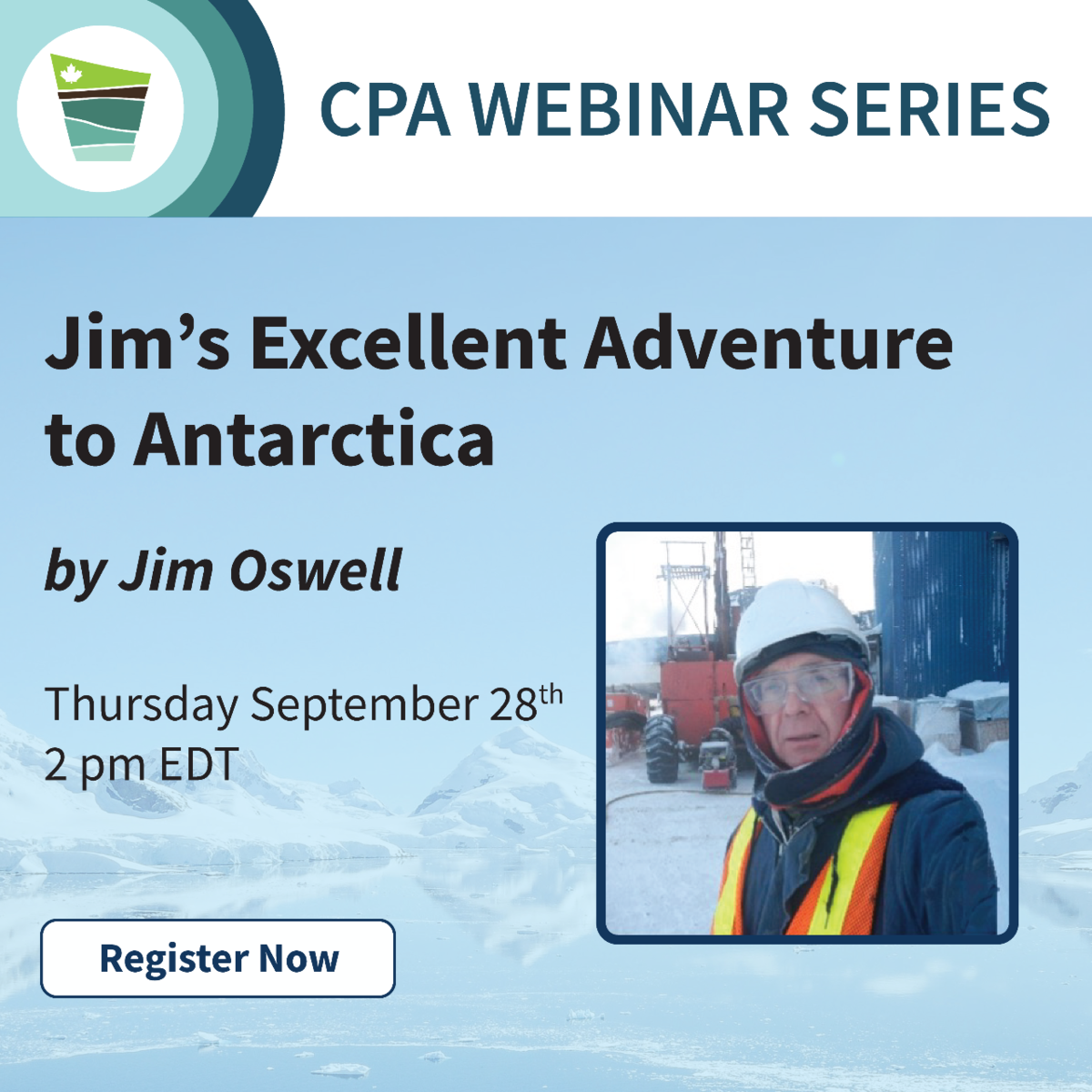 |
September 28, 2023
Jim’s Excellent Adventure to Antarctica with Jim Oswell
In late October 2019, Jim Oswell traveled from Canada to Antarctica as part of team preparing to develop and construct a new research station for the New Zealand government on Ross Island (77°51’ South). Jim spent 10 days on site and was able to witness the last sunset (until February 22, 2020), walk in the shadows of Scott and Shackleton, watch baby seals being born on the ice pack and hike some hills with views of active volcanoes and glaciers. This talk will provide photographs of his visit including transport by the United States Air Force from Christchurch New Zealand to a runway on the polar ice sheet, the New Zealand Scott Base research station, the United States McMurdo research station, and the ground conditions where the new research station will be constructed. |
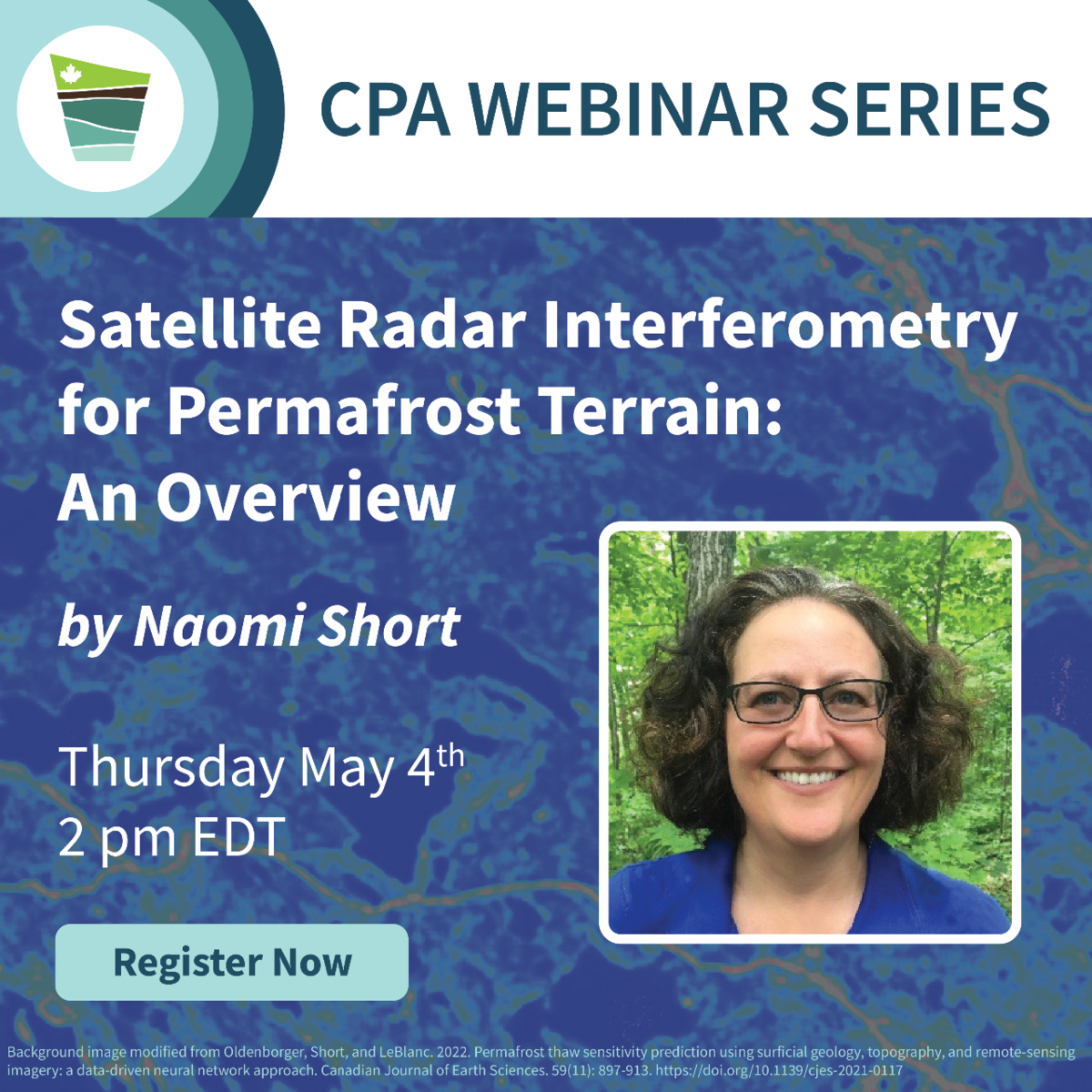 |
May 4, 2023
Satellite Radar Interferometry for Permafrost Terrain: An Overview with Naomi Short
Satellite radar interferometry is a technique that can measure millimetre to centimetre scale displacement of the ground from space. The field of radar interferometry applied to permafrost terrain has evolved rapidly over the last 10 years and is now an established method and source of information about permafrost regions. This talk will present an overview of the evolution of the method, some examples of what is possible, some of the lessons learned and some comments on the field today. The talk is designed for permafrost experts, to onboard them to the journey of radar interferometry and to help them make informed choices about using the technique and its products. |
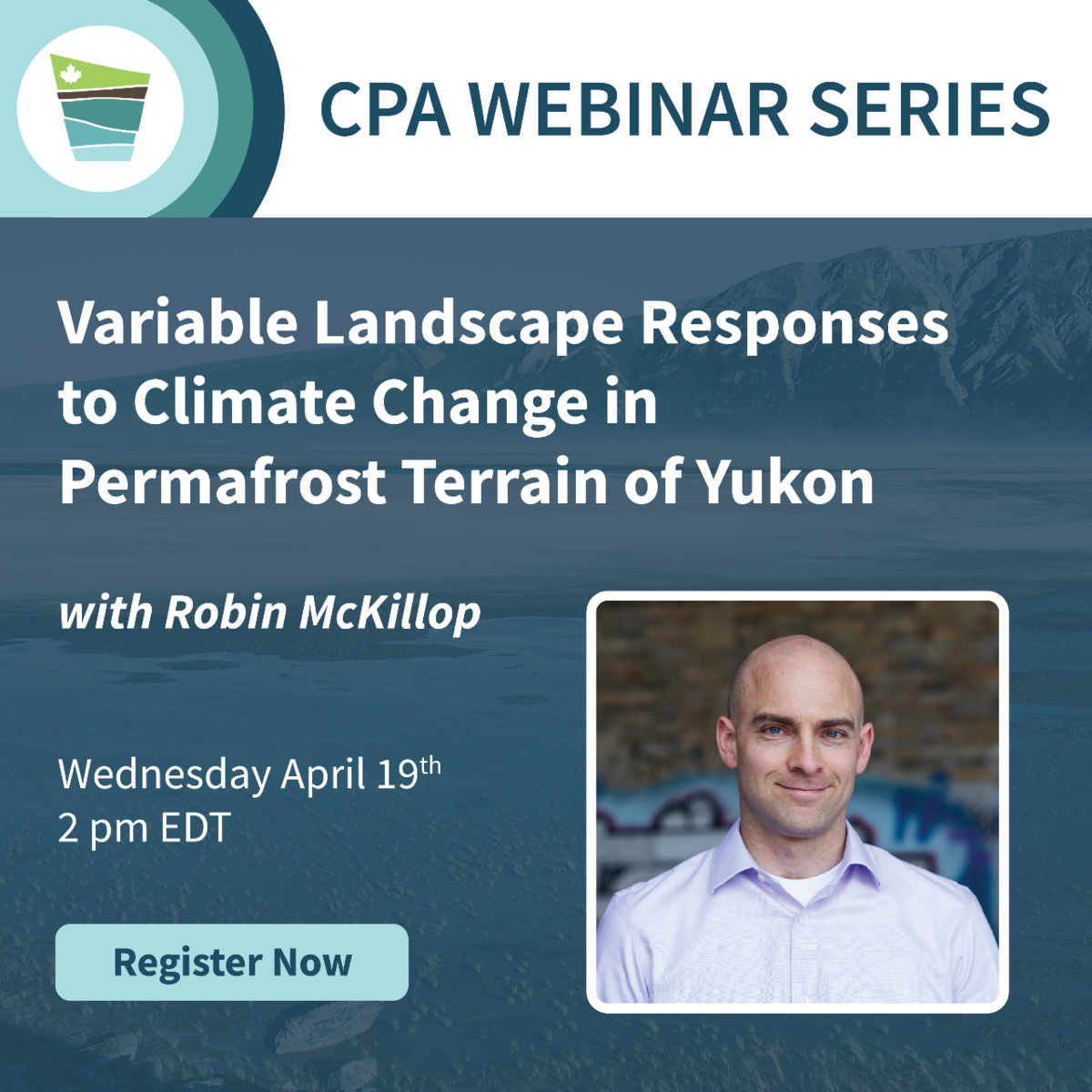 |
April 19, 2023
Variable Landscape Responses to Climate Change in Permafrost Terrain of Yukon with Robin McKillop
The geomorphological effects of climate change are perhaps most pronounced in regions of permafrost, yet some landscapes within these regions respond more rapidly and severely than others. With a focus on Yukon, the purpose of this webinar is to summarize the effects pathways of climate change on permafrost terrain, highlights and explains differences in permafrost-related responses, and explores how northern governments and communities can better plan for change. |
.png) |
March 29, 2023
CPA Panel Discussion: How to Write a Good Conference Paper
This panel discussion aims to provide early career researchers with background on the preparation of conference papers, tips to improve your conference paper, and information on the review process. |
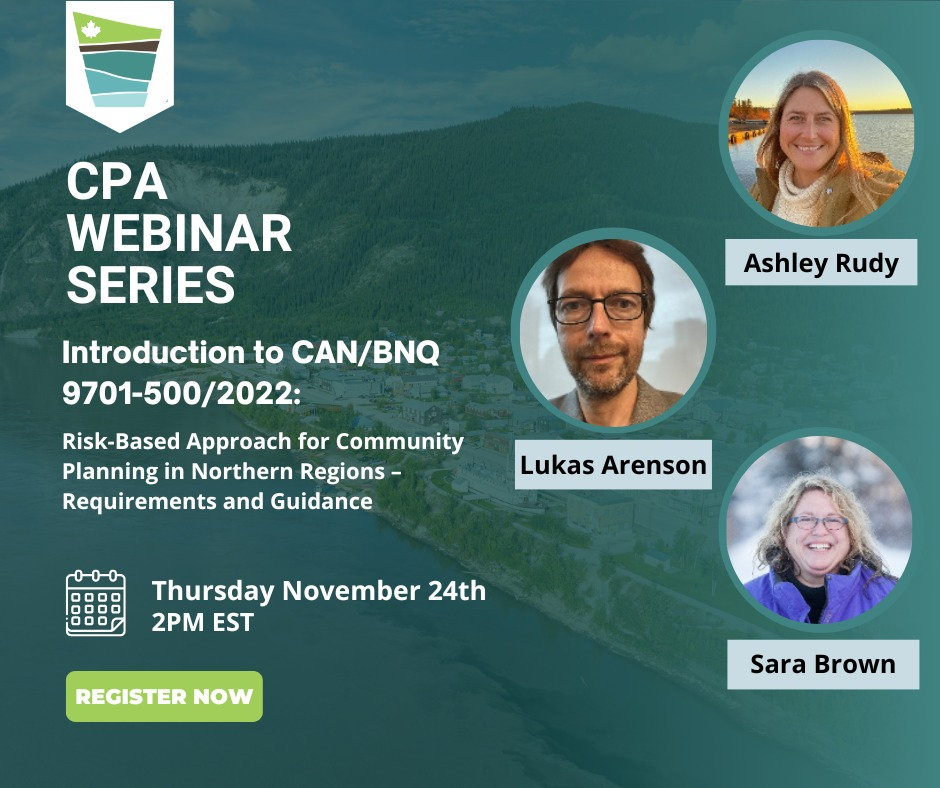 |
November 24, 2022
Introduction to CAN/BNQ 9701-500/2022 with Ashley Rudy, Lukas Arenson, and Sara Brown
An introduction to a risk-based approach for community planning in Northern regions. |
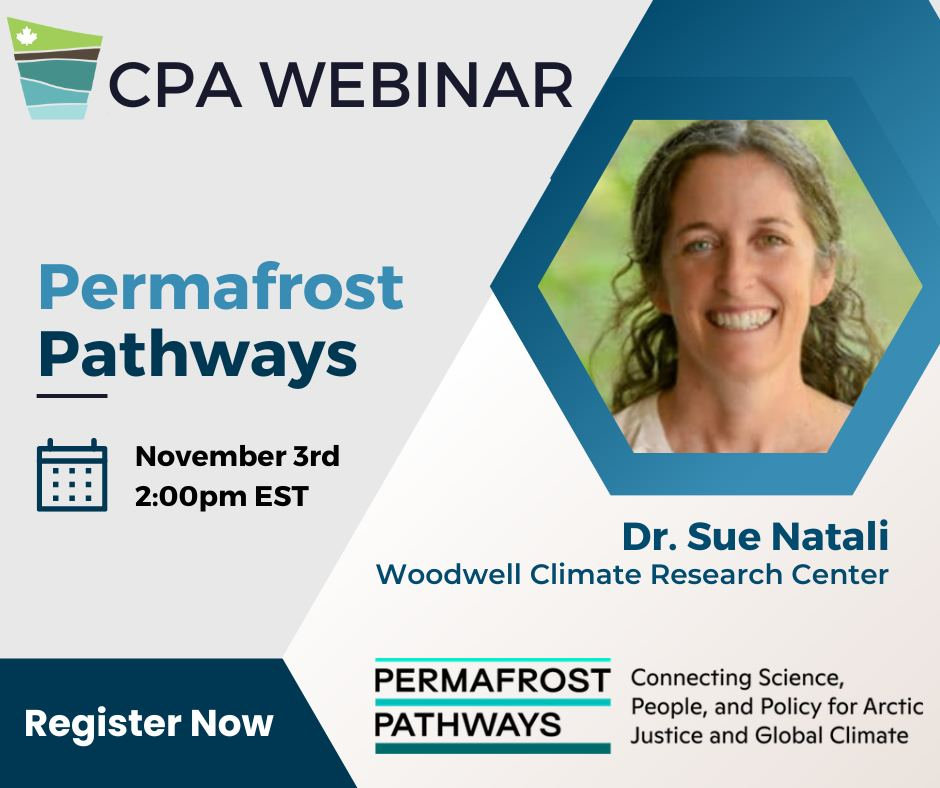 |
November 3, 2022
Permafrost Pathways with Sue Natali
Beginning in 2022, Permafrost Pathways, brings together experts in arctic and climate science, policy action, and environmental justice to inform and develop adaptation and mitigation strategies to address permafrost thaw. This presentation will provide an overview of the motivation, approach, objectives, and progress to date for the Permafrost Pathways project. As this project is just getting started, this will be an opportunity to provide input/feedback and to discuss potential areas for collaboration or networking for CPA members. |
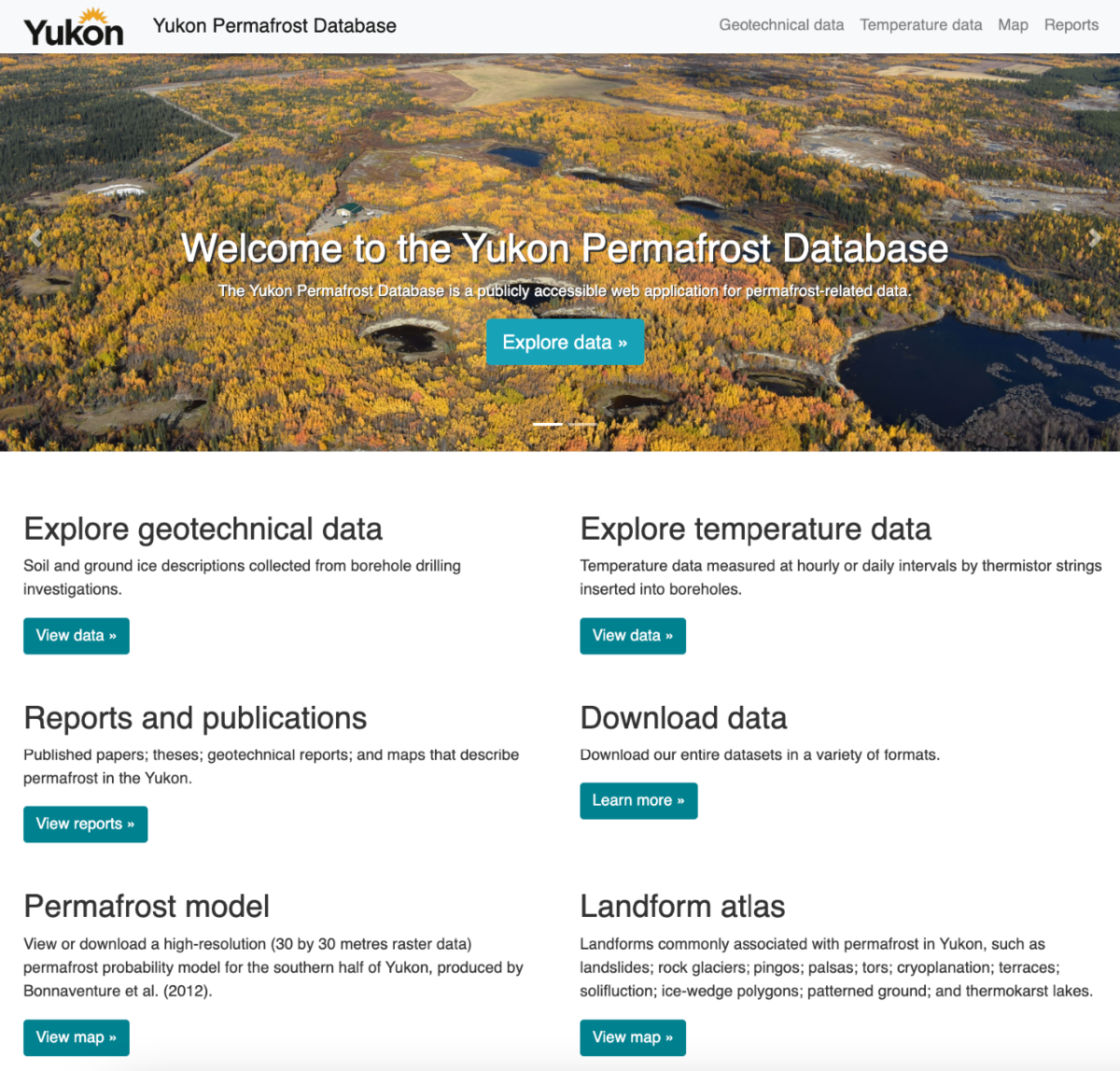 |
April 6, 2022
Tour of the Yukon Permafrost Database with Emilie Stewart-Jones
As permafrost degradation increasingly impacts Yukon communities and infrastructure, access to data describing Yukon permafrost is of vital importance. Beginning in 2019, the Yukon Permafrost Database was created to make Yukon permafrost data available to users in a variety of fields. This presentation will include background on the development of the database, a brief overview of the data it contains and a virtual tour of the online database portal. |
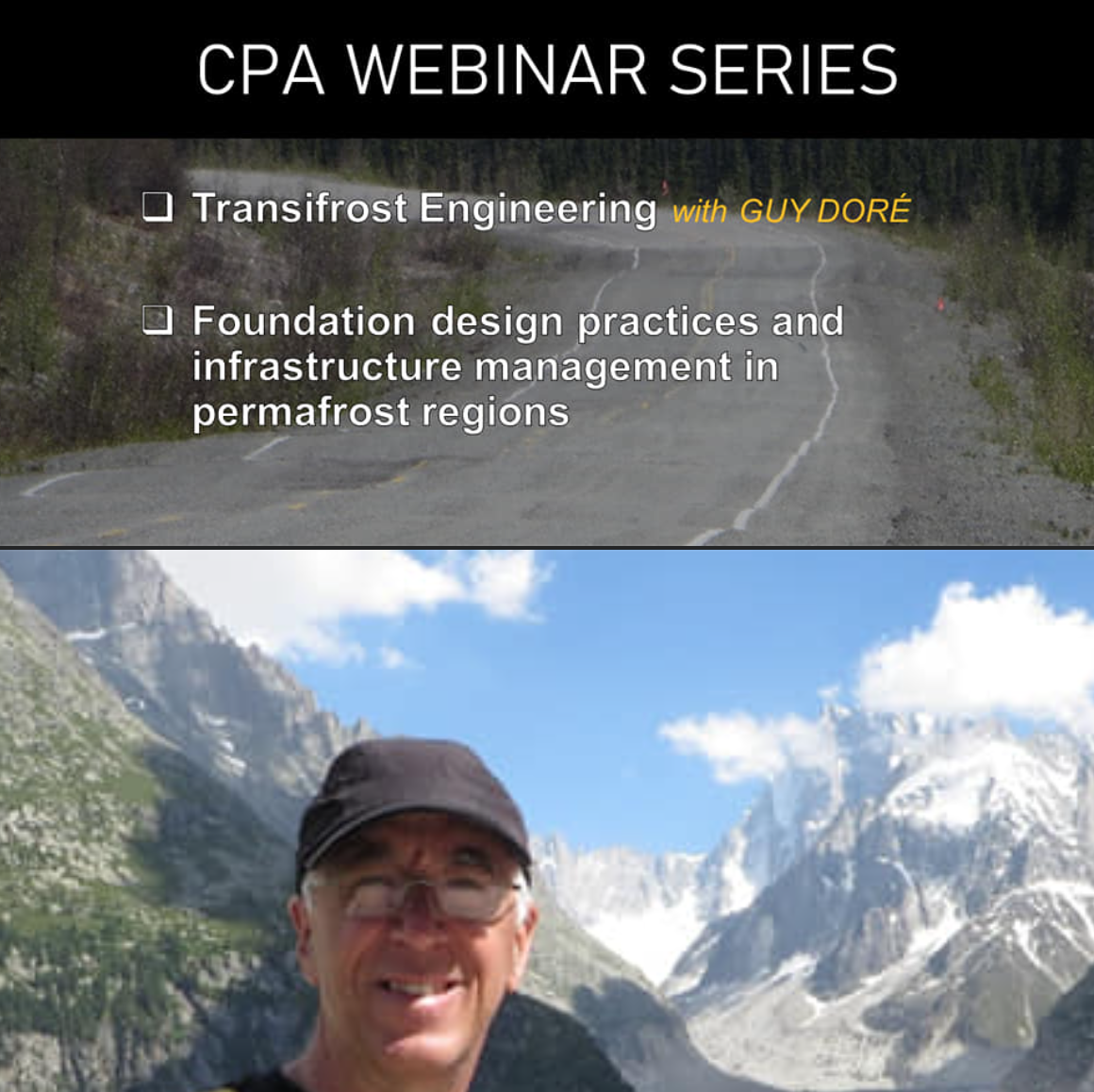 |
December 15, 2021
Transifrost Engineering with Guy Doré
With climate warming affecting Northern Canada at a breathtaking pace and with more frequent and more intense precipitations, permafrost can no longer be considered as permanently frozen soils. In such a rapidly changing environment, we need to reconsider our approach to foundation design and to intensify the development of tools to support infrastructure management in permafrost regions. The presentation looks at some of the design practices currently used and will suggest some improvements likely to help addressing the problems related to permafrost in transition. It also highlights the importance of the development decision-making tools to support infrastructure management in Northern Canada. |
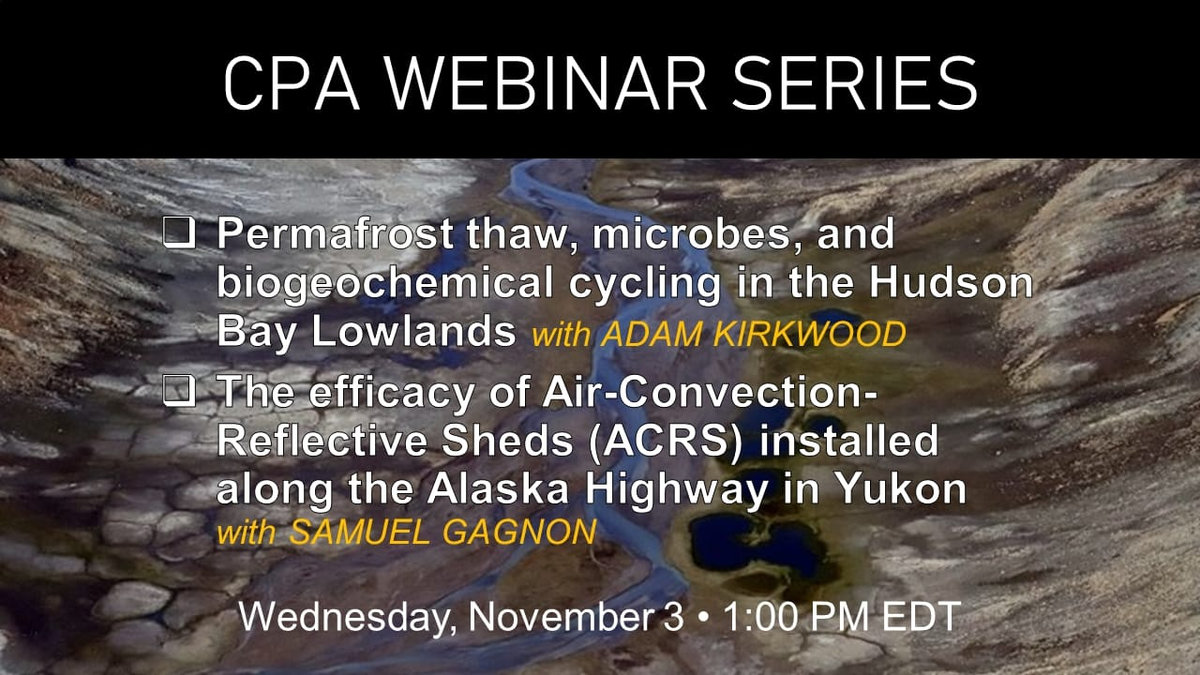 |
November 3, 2021
Permafrost thaw, microbes, and biogeochemical cycling in the Hudson Bay Lowlands with Adam Kirkwood
The efficacy of Air-Convection-Reflective Sheds installed along the Alaska Highway with Samuel Gagnon
The Hudson Bay Lowlands (HBL) is the largest peatland in North America, and hosts North America's lowest latitude continuous permafrost. The HBL stores 30 Pg of carbon, and is estimated to have amongst the highest storage of mercury compared to the remainder of the circumpolar north. Due to climate warming in the HBL, permafrost is thawing, which leads to changes in environmental variables such as temperature and moisture that impact the biogeochemical cycling of these two important elements. Little is known about how permafrost thaw in the HBL impacts the production of greenhouse gases such as carbon dioxide (CO2) and methane (CH4), and the conversion of inorganic mercury to it's organic and neurotoxic form of methylmercury. Therefore, the purpose of this research is to understand how thawing permafrost creates environments that may be more or less suitable for microbial processes such as methane production (methanogenesis) and the conversion of inorganic mercury to methylmercury (methylation). With several years of fieldwork, sample collection, and laboratory experiments, this research contributes important new information on how permafrost landscapes in the HBL are changing, and what this means for greenhouse gas and methylmercury production.
The accelerated warming of the Arctic and subarctic at the circumpolar scale has led to permafrost instability and degradation, causing structural damage to transportation infrastructure and increasing maintenance and repair costs. As a result, mitigation techniques have been developed to stop or reduce permafrost degradation under infrastructure. This study tested the efficacy of air-convection-reflective sheds (ACRS) installed along the Alaska Highway in Yukon (Canada). Soil surface, air, and ground temperatures were recorded under the ACRS between 2008 and 2016, which were then compared with values from an unmitigated road embankment and from the natural ground near the road embankment. The design of the ACRS blocked incoming solar radiation, prevented snow accumulation, and promoted air convection through the stack effect, which resulted in a cooling efficiency of 358% compared to the reference site. The net heat loss resulted in a 6.3°C cooling of the average soil surface temperature and caused the active layer thickness to decrease by nearly two meters, thus stopping permafrost warming, promoting permafrost recovery and its upward aggradation in the embankment. Implementations of the ACRS in specific vulnerable or degraded sections of roads and airstrips represents a viable solution to permafrost thaw and embankment failure. |
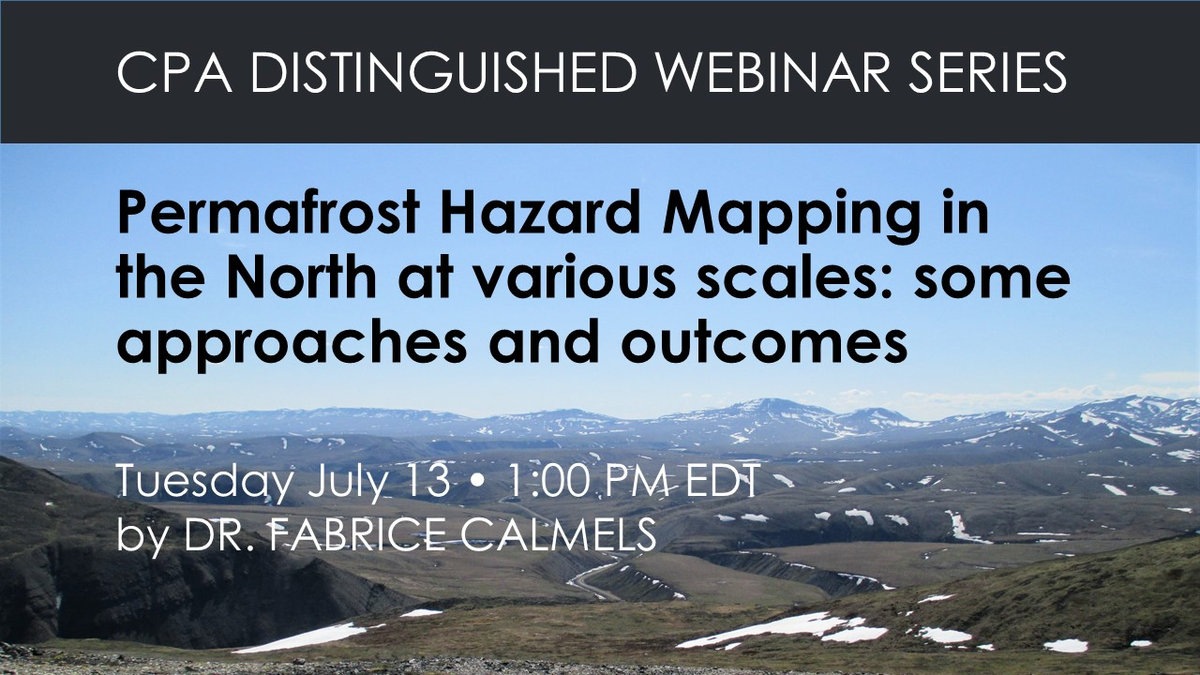 |
July 13, 2021
Permafrost Hazard Mapping in the North at various scales: some approaches and outcomes with Dr. Fabrice Calmels
|